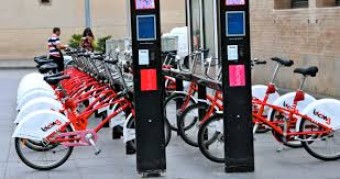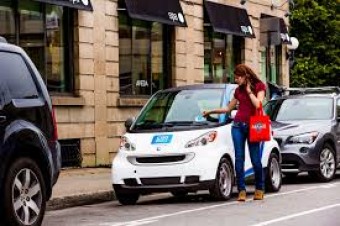How Barcelona is reducing daily car journeys
Nick Michell spoke to Mercedes Vidal Lago, Councillor for Mobility in Barcelona, about the city’s plans to reduce car journeys and encourage increased walking and cycling
How much of a problem is air pollution in Barcelona in relation to motorised-vehicles?
“Today Barcelona clearly exceeds the thresholds recommended by the World Health Organisation both for nitrogen dioxide and particles, especially in terms of average levels of these pollutants in the atmosphere. Air pollution not only causes more than 650 premature deaths annually in Barcelona, but also represents the deterioration in the quality of life for many people; an increase in cardio respiratory illnesses, and especially affects the elderly, people with respiratory problems and children may suffer from delayed cognitive development.”
“So fighting pollution is a priority for the Government, and we are willing to take bold steps. In November 2016 we presented the government measure “Program of measures against air pollution”, 58 specific actions to be developed during the period 2016-2020. Many of the measures are linked to our Urban Mobility Plan.”
The Urban Mobility Plan targets a reduction of 21 percent in the number of car journeys made daily. Is the city on track to reach this goal?
“The Urban Mobility Plan (UMP) sets out an ambitious target for changing Barcelona’s modal split towards sustainable mobility. It plans many measures to integrate the use of bicycles, improve surface infrastructure for public transport and most importantly increase tenfold the areas in which pedestrians may have priority. This is our most ambitious goal, the one that should have the highest impact on emissions and car use dependence, and therefore on completing the 21 percent decrease of car and motorbike use. The timescale for this was very short, 2013-2018, taking into account that the UMP was only approved in 2015. We are committed though to making a huge step forward.”
How important is the development of superblocks in encouraging increased walking and creating a more pedestrian friendly urban space?
“Today 20 percent of trips made in Barcelona are in a car or motorbike, whereas 60 percent of its public space is dedicated to carriageways. We must rebalance this in favour of pedestrians, bicycles and public transport, providing more space for sustainable modes. Beyond, we should recover urban space for social activities, such as resting, entertainment, interaction, or street markets, urban spaces where before we had traffic and car parks.”
“In 2016 we started the first pilot superblock of this term, in Poble Nou. We learned a lot from the experience, which allowed us to continue with the implementation of the programme this year. In 2017 we aim to start five new superblocks: Sant Antoni, Horta, Eixample, les Corts, and Gracia.”
The number of bike lane kilometres in Barcelona has increased by 21 percent, from 116 to 141 kilometres. What progress is being made on the aim to increase three-fold the number of bicycle lane kilometres?
“Barcelona has introduced a total of 23 bike lanes from the start of this term, and six more will be added this year. As part of the bike strategy, the city is continuing to expand the network of cycle paths and cyclists, with the aim of having an infrastructure that is safe, understandable, connected and set up to access the whole city by bike.”
“Since the beginning of this term, the number of bike lane kilometres in Barcelona has increased by 21 percent, from 116 to 141 kilometres and the city government continues to work to achieve the goal of 308 kilometres. This summer sees the start of the construction of 62.5 more kilometres.”
Continue reading:
https://cities-today.com/barcelona-reducing-daily-car-journeys/
- Priority for bicycles in Barcelona’s mobility plan.









